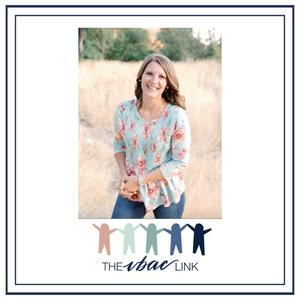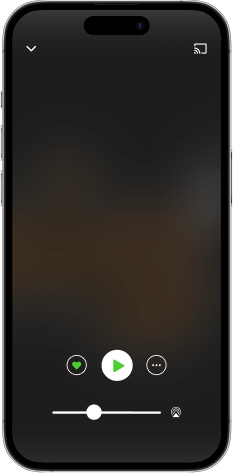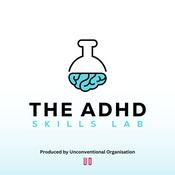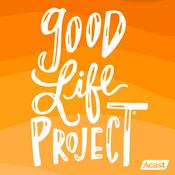Available Episodes
5 of 440
- Anna from Sacred Birth International: Daring to Birth Differently“Peace on earth begins with birth.”In this powerful episode, Meagan sits down with Anna Lundqvist, founder of Sacred Birth International. Anna is a seasoned midwife from Sweden whose work has evolved into educating birthing families, doulas, and birth professionals on how to protect birth as a sacred, primal, and physiological event. Drawing from years of attending births around the world, Anna now focuses on teaching how to reclaim the innate design of birth, preserve reverence throughout the process, and support mothers in advocating for their autonomy. Her philosophy is rooted deeply in trauma-informed care and physiological birth wisdom. Meagan and Anna let the conversation flow naturally as they dive into induction, cervical checks, trauma, and the harsh realities many families face within the medical system. Anna offers heartfelt insight on processing fears, discerning intuition from anxiety, and why she often encourages VBAC at home for those who feel aligned with that path. Thank you for joining us today, @sacredbirthinternational for a very special conversation!!Content warning: This episode includes frank discussion of birth after sexual abuse and trauma. Please listen with care.Needed Website: Code VBAC for 20% OffThe Ultimate VBAC Prep Course for ParentsOnline VBAC Doula TrainingSupport this podcast at — https://redcircle.com/the-vbac-link/donationsAdvertising Inquiries: https://redcircle.com/brands--------1:09:45
- Episode 432 Air Force Officer Sarah's VBA2C During an OCONUS PCS + Nitrous OxideWomen of Strength, you won’t want to miss this one!!In today’s episode of The VBAC Link Podcast, we welcome Sarah, a mom of three boys, an active duty Air Force officer (AND a spouse to one as well!) about her incredible VBA2C during an overseas PCS move from South Korea to Florida. Sarah’s first birth was a c-section for breech presentation. Her second was a scheduled c-section timed around her husband’s deployment. Her third pregnancy brought navigating prenatal care in a foreign country, a huge move with two toddlers in tow, and the stress of finding a completely new birth team. After Sarah’s water broke unexpectedly at 37 weeks while visiting family in Kentucky, and with all their belongings either in Arizona or on a boat in the Pacific, she was induced so she could labor while a VBAC-supportive doctor was on call. After 11 hours on Pitocin, she delivered her baby vaginally, finished the move and arrived in Florida when her newborn was just one week old. Sarah & Meagan also share tips about using nitrous oxide in labor and important Tricare resources for military families. Though there were wild twists and turns, Sarah got her especially redemptive moment of being fully present for the moment she introduced her new baby to her other boys. We are so proud of you, Sarah!!Nitrous Oxide ArticleNeeded Website: Code VBAC for 20% OffThe Ultimate VBAC Prep Course for ParentsOnline VBAC Doula TrainingSupport this podcast at — https://redcircle.com/the-vbac-link/donationsAdvertising Inquiries: https://redcircle.com/brands--------44:47
- Episode 431 Catie's VBAC with Hyperemesis Gravidarum + CholestasisCatie, a pediatric physical therapist from Northern Kentucky, joins Meagan on the podcast today sharing her three birth stories– a vaginal delivery, c-section, and VBAC! Catie struggled with hyperemesis gravidarum (among other complications) during all three pregnancies but wasn’t officially given the diagnosis until she was hospitalized with her third. By that time, she had researched hard and was ready to proactively manage it, even though her doctor wasn’t up-to-date on all of the ways to do that. Catie shares what she did and how it made a world of difference for that third pregnancy.In regards to her births, Catie talks about her first induced vaginal birth, her long, traumatic second labor that ended in an urgent c-section, a PTSD diagnosis, and her healing VBAC that was medically induced at 37 weeks due to Cholestasis. After her traumatic second birth, Catie really fought for healing. Women of Strength, we cannot stress enough how important this is. Through EMDR, pelvic floor therapy, exercise, and more, Catie gained back the confidence and trust she needed in her body to absolutely rock her VBAC! ICP Care Cholestasis ArticleThe VBAC Link Blog: Kick CountsNeeded Website: Code VBAC for 20% OffThe Ultimate VBAC Prep Course for ParentsOnline VBAC Doula TrainingSupport this podcast at — https://redcircle.com/the-vbac-link/donationsAdvertising Inquiries: https://redcircle.com/brands--------1:06:25
- Episode 430 Esther's Unassisted HBA3C & HBA4C After LossToday we’re talking with Esther, who shares her eventful six birth journeys and two miscarriages. Esther's stories include four Cesareans, breech twins, placental abruptions, hemorrhage, stillbirth, and two unassisted home births. Her experiences deeply changed her understanding of birth, trauma, and autonomy. Esther faced unexpected involvement from social services and legal pressure around her birthing choices, ultimately leading her to give birth to her sixth baby unassisted and in hiding. She talks about rebuilding trust in her body after trauma, how inflammation and stress played into her pregnancies, and why knowing your rights in birth matters so deeply. Esther was committed to taking care of her own health and the health of her babies by doing whatever it took to birth in the way that felt safest to her. Her stories are honest, brave, and full of determination!**This episode discusses miscarriage, medical trauma, and infant loss. As The VBAC Link Podcast is storytelling by nature, we believe informed decision-making comes from hearing all types of birth after cesarean stories as told by women themselves. We encourage birthing with a supportive, qualified professional, but also recognize that some women give birth without providers for personal or situational reasons. Please take care while listening.**Needed Website: Code VBAC for 20% OffThe Ultimate VBAC Prep Course for ParentsOnline VBAC Doula TrainingSupport this podcast at — https://redcircle.com/the-vbac-link/donationsAdvertising Inquiries: https://redcircle.com/brands--------53:14
- Episode 429 Lily Nichols, RDN Returns + Nutrition Before, During & After PregnancyWe are so excited to welcome back our favorite registered dietician and bestselling author, Lily Nichols! Lily is here to chat with us about her third book, Real Food for Fertility. She explains how while the title focuses on fertility, this book goes far beyond that, diving into how nutrition supports hormone health and overall well-being at every stage of life.Meagan and Lily talk about nutrition before pregnancy, during pregnancy, and even how diet can sometimes (but not always!) affect a baby’s size. Lily also shares her hopes for future research on nutrition recommendations and the important reminder that even small, consistent changes in how we eat can make a meaningful difference. It’s truly never too late to start.Is it Too Late to Make Nutrition Changes in Pregnancy?Needed Website: Code VBAC for 20% OffIs it Too Late to Make Nutrition Changes in Pregnancy?Institute for Prenatal Nutrition WebsiteLily’s BooksLily’s FreebiesLily’s InstagramNeeded Website: Code VBAC for 20% OffThe Ultimate VBAC Prep Course for ParentsOnline VBAC Doula TrainingSupport this podcast at — https://redcircle.com/the-vbac-link/donationsAdvertising Inquiries: https://redcircle.com/brands--------55:14
More Education podcasts
Trending Education podcasts
About The VBAC Link
Here at The VBAC Link, our mission is to make birth after Cesarean better by providing education, support, and a community of like-minded people. Welcome to our circle, we are so glad you are here!
Podcast websiteListen to The VBAC Link, The Jordan B. Peterson Podcast and many other podcasts from around the world with the radio.net app

Get the free radio.net app
- Stations and podcasts to bookmark
- Stream via Wi-Fi or Bluetooth
- Supports Carplay & Android Auto
- Many other app features
Get the free radio.net app
- Stations and podcasts to bookmark
- Stream via Wi-Fi or Bluetooth
- Supports Carplay & Android Auto
- Many other app features


The VBAC Link
Scan code,
download the app,
start listening.
download the app,
start listening.





































